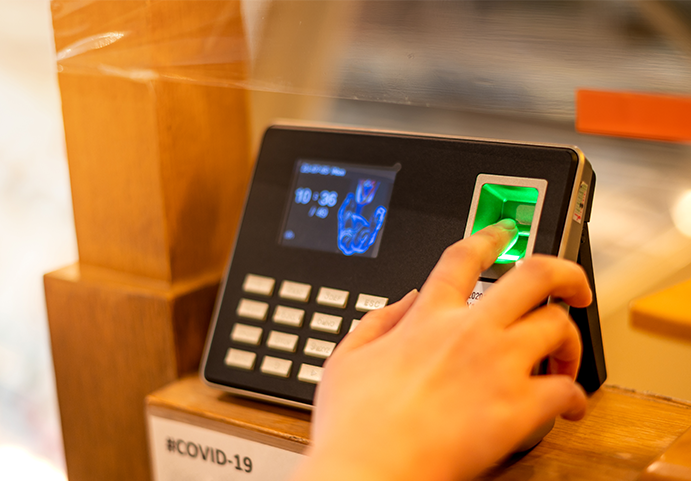
For many employees, clocking in and out every day can feel like an unnecessary hassle. Some even see time and attendance systems as a way for employers to keep a close eye on them rather than a tool to improve productivity. But is that really the case?
From a business perspective, tracking time helps ensure employees are working their scheduled hours, payroll is accurate, and productivity stays on track. But employees often worry that these systems create a culture of micromanagement, where every minute is scrutinised.
So, are time and attendance systems truly about improving efficiency, or are they just another way to monitor workers?
Why Businesses Use Time and Attendance Systems
Companies of all sizes rely on time tracking for several reasons, and most of them have nothing to do with spying on employees. Here are some of the key benefits:
- Ensures fair pay. Employees are paid correctly for their actual working hours, including overtime.
- Prevents time theft. Avoids issues like buddy punching (when one employee clocks in for another) and extended breaks.
- Helps with scheduling. Employers can plan shifts more effectively, reducing understaffing or overstaffing.
- Improves accountability. When employees log their hours, they’re more likely to stay focused during work hours.
- Supports compliance. Many industries have labour laws that require accurate timekeeping to prevent employee exploitation.
For businesses, having an automated attendance tracking systems is about maintaining structure and ensuring smooth operations. Without it, managing shifts, payroll, and productivity would be much harder.
Why Employees Might Feel Monitored
On the other hand, not everyone sees time tracking as a helpful tool. Many employees feel like it’s a way for their boss to constantly check up on them rather than focusing on their actual work.
Here are some common concerns:
- Creates unnecessary pressure. Some employees feel they have to “prove” they are working rather than being trusted to do their job.
- Feels like micromanagement. If employers focus too much on clock-in times instead of actual performance, it can lower morale.
- Can be too rigid. Not all jobs require strict start and end times, and employees may feel like their flexibility is taken away.
- Might not reflect actual work. Someone who stays late at the office isn’t necessarily more productive than someone who finishes tasks efficiently.
If a company relies too much on tracking time instead of measuring performance, employees may feel undervalued and frustrated.

Are Time and Attendance Systems Actually Good for Productivity?
The main argument for time tracking is that it helps employees stay focused and accountable. But does it actually improve productivity?
It depends on how it is used. When implemented well, a time and attendancesystem can be a great tool to:
- Reduce unnecessary absences and lateness
- Make payroll processing easier and more accurate
- Identify trends in workload and scheduling
- Prevent burnout by tracking excessive overtime
However, if used poorly, it can create a negative work environment where employees feel they are being watched rather than supported. In these cases, productivity might actually drop, as employees may become more focused on avoiding penalties than doing their best work.
How Companies Can Use Time Tracking Without Losing Employee Trust
So, is there a way to implement a time and attendance system that benefits both the company and its employees? Absolutely. The key is to strike the right balance between accountability and flexibility.
Here’s how businesses can make time tracking more effective and employee-friendly:
- Be transparent. Employees should understand why time tracking is in place and how it benefits them (fair pay, better work-life balance, and improved scheduling).
- Focus on results, not just hours. If employees are consistently completing their tasks and meeting expectations, their performance should matter more than how many hours they log.
- Allow flexibility. Not every role requires strict clock-in times. Giving employees some control over their schedules can lead to higher job satisfaction.
- Use time tracking for fairness, not punishment. The system should ensure equal treatment, not be used to penalise employees for minor attendance issues.
- Consider different tracking options. Traditional punch cards aren’t the only option. Mobile apps, digital check-ins, and project-based tracking can make time logging easier and less stressful.
Final Thoughts: A Necessary Tool or Just a Hassle?
Time and attendance systems are neither good nor bad on their own, it all depends on how they are used.
When done right, they help businesses run smoothly, ensure fair pay, and prevent overwork. But when they are too rigid or overly focused on monitoring, they can harm employee morale and make workers feel untrusted.
The best approach? Businesses should use time tracking as a tool to support employees rather than just keep tabs on them. If employees see that attendance systems are in place to benefit them too, they are far more likely to accept them as a necessary part of work life.
At the end of the day, productivity isn’t just about hours worked, it’s about results. Companies that find the right balance between structure and trust will have happier, more motivated employees who actually want to do their best.






